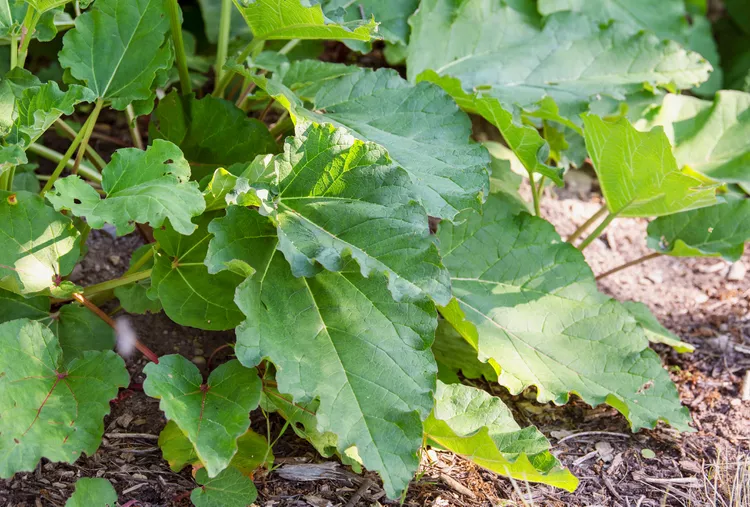
Description
Massive bunches of leaves up to 60 cm (2 feet) across are produced by rhubarb. The leaves are carried on proportionately enormous petioles that emerge from an underground stem and have a diameter of at least 25 mm, or 1 inch, and a length of up to 60 cm. The first signs of spring are the leaves.
Habitat
Only a few of the species are found outside of the genus’s area of distribution, which is the northern and central regions of Asia.
Uses
The main symptoms related to the digestive system that are treated with rhubarb are constipation, diarrhea, heartburn, stomach pain, gastrointestinal (GI) bleeding, and preparation for specific GI diagnostic procedures.

Varieties
Rhubarb comes in a variety of varieties, each having unique qualities that make it a desirable plant to raise. Here are a few typical types:
“Victoria“: Because of its mild and soft stalks, this rhubarb species is well-liked for cooking.
“Valentine“: This variety resists illness and climatic changes well.
“Crimson Cherry“: The sweetness of this type is well-known.
“Canada Red“: Unlike many other rhubarb kinds, this plant thrives in colder areas and has a higher sugar content.
Plant Care
- Light
When grown in full sun—that is, at least six hours of direct sunshine every day—rhubarb usually yields the highest quality results. However, afternoon shade is generally beneficial to plants in warmer growth zones, particularly in the summer months. On the other hand, slender stems may arise from excessive shade.
- Soil
More than neutral soil pH, rhubarb favors a little acidic soil. It also prefers soil with a lot of organic materials since it supports its growth. Though it should drain effectively, the soil should be damp. Consider planting your rhubarb in raised garden beds if you have heavy soil, such clay, as this will give it the right growing conditions.
- Water
Rhubarb prefers steady wetness. Rhubarb requires frequent watering throughout its first two years of growth, even though older plants may withstand some drought. But avoid overwatering rhubarb because damp soil might cause the crowns to decay. Watering the plant when the top inch of soil becomes dry is generally a good idea.
- Temperature and Humidity
Climates with average winter and summer temperatures of less than 40 degrees Fahrenheit and 75 degrees Fahrenheit are preferred by rhubarb growers. In warmer climates, it can be grown as an annual; however, excessive heat might thin the leaves and stalks. The amount of moisture that rhubarb requires will be hard to sustain in dry locations, although mulching the soil can help.
- Fertilizer
For proper growth, rhubarb requires a lot of organic matter in the soil, such as compost. Since the nitrates in chemical fertilizers might damage young rhubarb plants, avoid using them on them. When your rhubarb plant begins its second growing season, you can fertilize it with organic matter, but if you plan to consume it, be sure it’s safe.
Table





